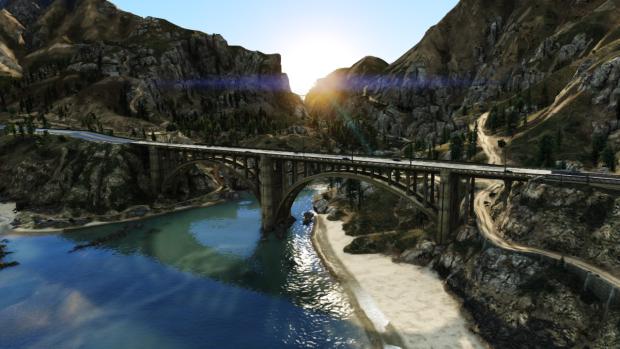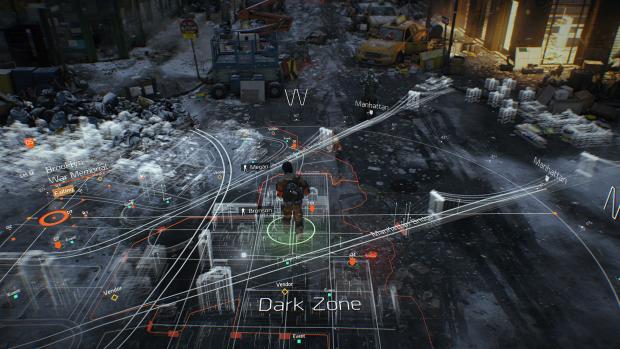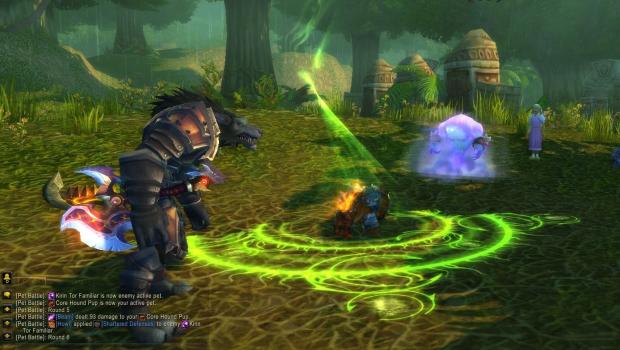Opinion: Gaming’s Open World Future
Over the last decade, Grand Theft Auto has popularised open worlds to the point that linearity has become something of a dirty word. Tomorrow sees the release of GTA’s fifth iteration, and with it, the largest ever world. It’s the biggest game of the year by some distance and, with the eventual release of GTA Online, arguably the most important.
Of course the proof will be in the pudding but in terms of scale and ambition Grand Theft Auto Online is unprecedented. From what has been announced it is a multiplayer component with a huge number of possibilities. Players can team up, go it alone, accumulate money by pulling off heists and robberies, set up races, create arenas for deathmatch style modes, or just generally explore and cause mayhem.
This isn’t an article about Grand Theft Auto, however, it’s about open gaming worlds, their increasing prominence in the biggest games, and the role they play in gaming’s future.

It all stems from the universal desire among developers to give their games longevity. Many developers tackle the conundrum with the addition of multiplayer. After all, it’s the multiplayer that many people buy and keep playing with the like of FIFA, Call of Duty and Battlefield.
The only other big budget games that have similarly long life spans are those with open worlds – the Crackdowns, Arkham City and, of course, Bethesda’s Skyrim. Skyrim was a monumental success and is still played avidly nearly two years on, because it offers up a world large enough to explore and all the tools necessary for players to make their own stories.
The future will see a marriage of the two, and the technology is now at hand to make it possible. A clear indication of this future came at E3 with Ubisoft’s reveal of Tom Clancy’s The Division. Single player in the traditional sense will never truly die, but in an increasingly online world single and multiplayer will become increasingly indistinguishable.

Marrying the narrative of a single player game with the addition of large groups of players is the goal in many ways, and open worlds are the best, and possibly the only real way, to let a large group of people play at once without it feeling like a crowded lift or forcing them into combat.
Massively multiplayer online games already do this to an extent, but it’s a genre that is on the wane. Sure, the like of World of Warcraft and EVE have sustained themselves for a very long time, but during that time countless imitators and pretenders have come and gone. Their success – and particularly the success of Blizzard – is near-impossible to duplicate. The solution then is simple: don’t even try.
Subscriptions aren’t the future for MMO games (free-to-play has seen to that) and it’s pretty much impossible to keep a game going as long as WoW without them, so why aim to keep them going for years at all?

Where subscriptions have led the aforementioned examples to impressive longevity, no subscriptions could see short-term massively multiplayer games, ones with clear beginning and end points. Imagine a multiplayer game played across an entire year in which updates continue the narrative, and keep gameplay fresh as players move towards a fitting conclusion.
The future is about seamlessly letting players interact with others around the world and setting that to narrative beats as well as regimented game modes like races and deathmatches. If a game as simple as Journey can merge single and multiplayer seamlessly with only the simplest forms of communication then something on a grander scale is a future that can be realised.
So the kind of games I’m talking about won’t feature hundreds of players, but they could feature a handful of groups working together. Journey seamlessly brings additional players in and out as it chooses, and this could be the same of other games as well.

Imagine a game in which two groups from opposing forces inhabit a large open level. Each has their objectives to complete like any other game, but they may also happen across each other and be able to hinder one another’s progress. Both could completely pass each other by, just as two people may in Journey, but if they do and where they might, would allow for each person who buys the game to experience it differently.
Perhaps that was a muddled example, but seamless multiplayer is a future with positives that outweigh the negatives. Proving your skill against AI doesn’t compare to proving it against human foes, so to marry that feeling with a meaningful campaign and story is a natural step forward.
Taking things back to Grand Theft Auto Online, Rockstar are preparing their largest ever open world to be inhabited by dozens of players at a time who can do pretty much whatever they want. There will also be, according to Rockstar North president Leslie Benzies, roughly 500 missions to completed either alone or as part of a team.
There will be problems of course, and it is still some distance away, but this is far from just Rockstar’s dream. It’s the future of video games.




